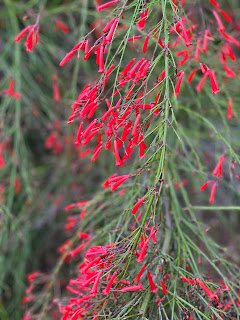Amazingly picturesque Madeira
Today, we stopped at the island of Madeira, one of Portugal’s two autonomous regions. The other is the Azores, (which we will visit next.)
———
Importantly, both Madeira and the Azores are located in the middle of the Atlantic ocean.
Although Madeira is geologically located on the African tectonic plate, it is culturally, economically, and politically European.
Madeira was part of the first archipelago claimed by the Portuguese during the age of discovery. The first Portuguese settlers began colonizing the islands in 1420. Until the first half of the 16th century, Madeira was one of the highest producers of sugar and of course they used slave labor.
Apparently it is in Madeira that, in the context of sugar production, slave labour was applied for the first time.
Madeira played a significant role in the transatlantic slave trade and sugarcane plantations during the Age of Discovery. In the 15th century, Portuguese explorers, including Zarco and Teixeira, colonized Madeira. The island became a hub for sugarcane cultivation, and the demand for labor led to the introduction of enslaved individuals. These forced laborers, primarily from Africa, worked on sugarcane plantations, contributing to Madeira’s economic prosperity. The exploitation of slave labor was a dark aspect of Madeira’s history during the era of sugarcane cultivation and the broader context of European colonization.
Madeira’s most important commodity eventually became its wine, Madeira wine. Sugar plantations were eventually replaced by Vineyards as Portugal moved sugar production to Brazil and São Tomé.
——-
Our visit today was in the city of Funchal named for its abundant crop, fennel.
Funchal is a modern cosmopolitan city known for its year-round warmer climate, incomparable natural beauty, it’s lively weekend nightlife that usually begins at midnight, and it’s festive Christmas, Halloween, Mardi Gras,and New Year’s Eve celebration that includes one of the largest fireworks displays in the world.
Entering the port of Funchal provides one of the most spectacular and picturesque views comparable to such places as the Bay of Kotor and the Port of Malta. It’s an absolute feast for the eyes with its lush and colorful gardens, azure bay, and verdant mountain backdrop. The port is an important stop over for commercial and Transatlantic passenger cruises between Europe the Caribbean and North Africa. I have visited here in numerous times on transatlantic sailings, beginning in 2011, on the Queen Victoria
Madeira generally has a very mild and moderate subtropical climate with Mediterranean summer droughts and winter rain. Many micro climates are found at different elevations here.
Today, it was mostly sunny, 67°, with a slight breeze!!
Here is a description of my tour today:
Your tour begins with a visit to a typical market, in Funchal's center, where an infinite variety of tropical fruits, vegetables, flowers, fish and regional items can be seen. A few steps from the local market you'll have the chance to visit the embroidery factory and taste the world-famous Madeira wine.
The tour continues to the village of Monte, where you'll have time to explore this small village perched up in the hills overlooking Funchal.
After this visit, you'll have the opportunity to experience a voyage by cable car with nature at your feet!
Made up by 12 cabins of eight seats each, this unforgettable voyage to the Botanical Gardens will take about seven minutes and offers its visitors a new panoramic route with privileged sights of not only Funchal's bay but also over the River of Joao Gomes, a place of rare and exotic beauty made up by the nucleus of Laurissilva forest.
Since the 17th century, Madeira Island had been waiting for a botanical garden, a dream that came true in 1960. Located less than two miles from the center of Funchal at Quinta do Bom Sucesso - a private Quinta belonging to the Reid's family - where the climatic conditions are much in favor of exuberant vegetation, the Botanical Garden boasts harmonious forms, contrasting colors and more than 2,000 plants. Throughout the gardens you can find the plants labeled with their scientific names, common name and origin.
#AnotherDayWithPerfectWeather!
#MadeiraIsBeautiful!





































